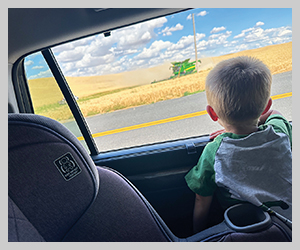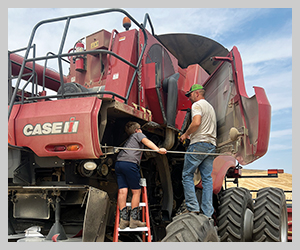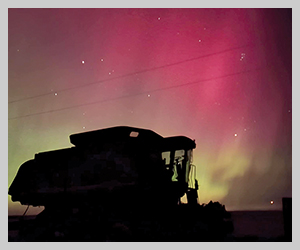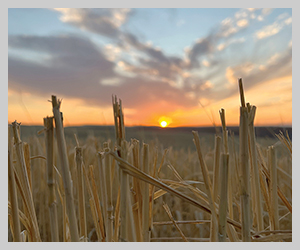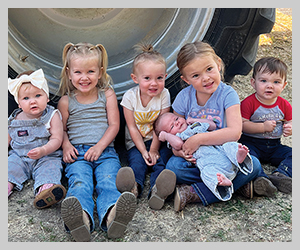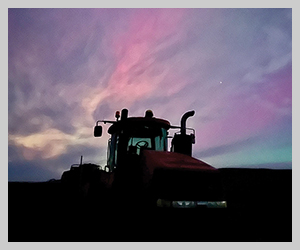Weathering Mother Nature’s whims
2024April 2024
By Anthony Smith
President, Washington Association of Wheat Growers
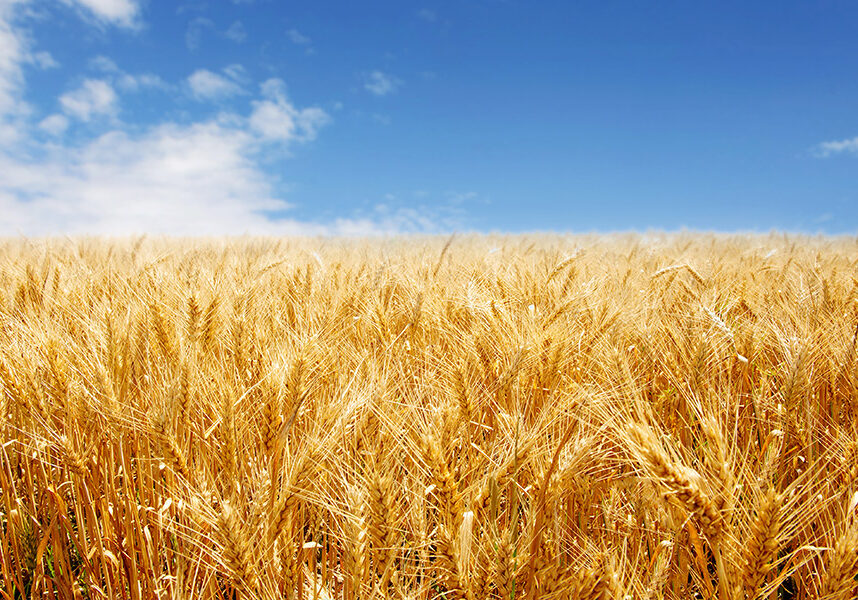
Here we are in April! Spring wheat planting and weed control in fallow and winter wheat crops are moving along across the Horse Heaven Hills. I wanted to talk about the good and the bad of weather, and how it affects wheat crops. Farmers already know this, but it may be interesting to others.
Let’s start with rain. The saying, “no rain, no grain,” is quite true. Timely rains are critical in growing an average to above-average wheat crop. Obviously, no rain isn’t good, but sometimes you can have too much rain! When it’s too rainy, you can’t get into the field to spray or plow or whatever it is your farm needs done. Rain during harvest will also set you back, and the worst case is when it rains right before harvest, causing grains to start sprouting. You don’t want that, because it hurts the grain quality and causes problems for millers and bakers. Let’s not forget about stripe rust, a disease caused by cool, rainy weather in the spring. We joke in Benton County that stripe rust means a good crop is brewing.
How about snow? A blanket of snow will protect your wheat crop in cold and windy conditions. On the other hand, if that blanket of snow lays too long on the wheat, it will create a fungus called snow mold, which can wipe a crop out. I’ve seen photos of wheat fields infected with snow mold, and it’s not a pretty sight. Washington State University (WSU) researchers do a phenomenal job breeding snow mold-resistant varieties.
Freezing temperatures in spring, when wheat is in the boot stage, aren’t good either. The boot stage is when the head is formed but hasn’t emerged yet. The wheat will have empty, white-colored heads. We’ll joke about 40-bushel straw with 10-bushel yield, but it’s not really funny.
Wind can wear you out working in it. It saps away at you all day and can hamper spraying for days on end. Wind can be helpful, however, as good airflow will help ripen your wheat when it’s close to harvest.
Then there’s hail. You just don’t want that.
I can go on and on about the weather, and like many farmers, I’m constantly monitoring it. I look at the three-day forecast, the 10-day forecast, and WSU’s weather stations in our area.
Farmers can’t control the weather, but what they can control is protecting their crops with crop insurance. In most cases, a farmer who has to turn to crop insurance because of a crop failure is hoping to break even. They’ll be lucky to get just enough money to plant next year’s crop. The farm bill safety net programs are also extremely important. Again, they generally don’t make farmers a profit; they just help pay the bills. Without these programs, one crop failure can be enough to put a farmer out of business, so that’s why we spend so much time lobbying for them, especially during farm bill years.
We have a long way to go until we harvest, but knowing I’m protected in case the crop is damaged keeps me going.



